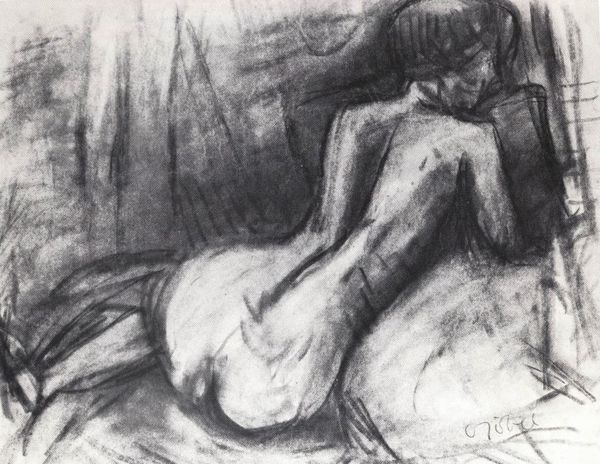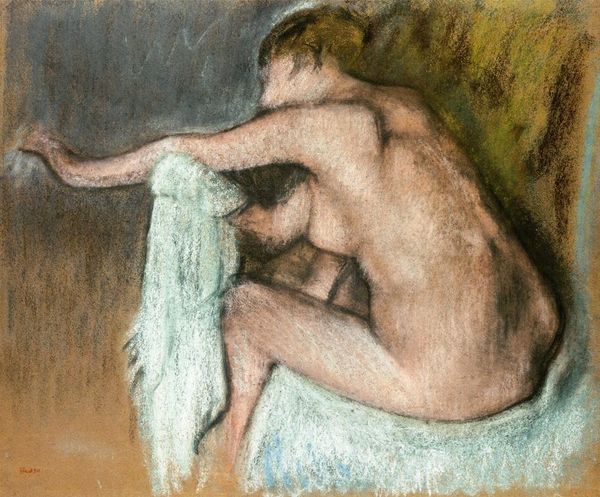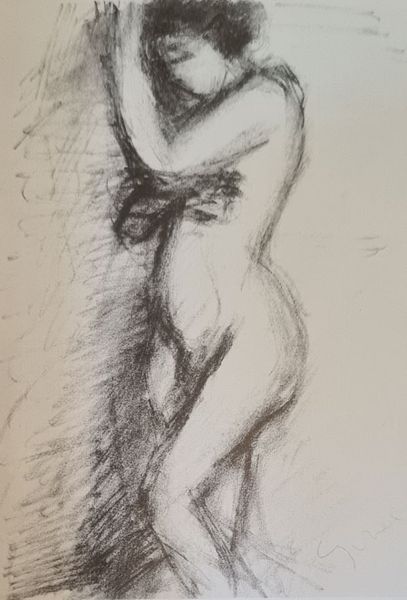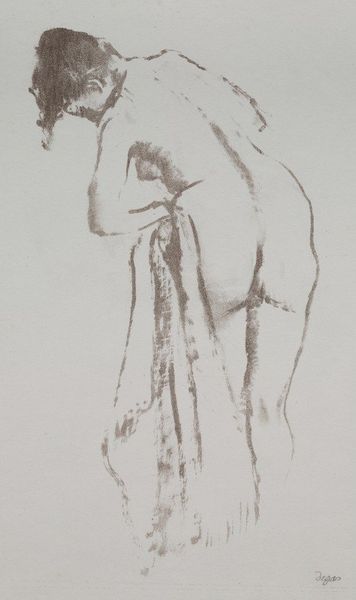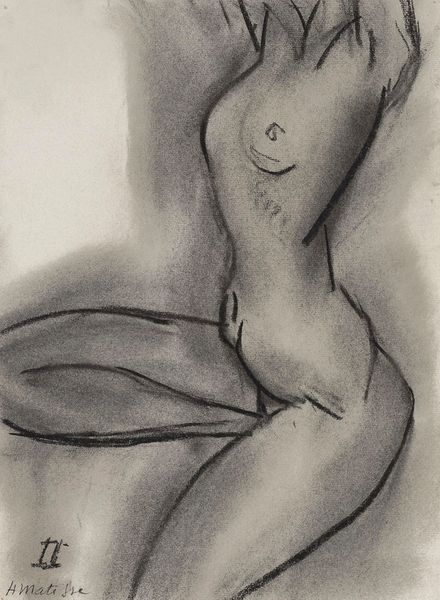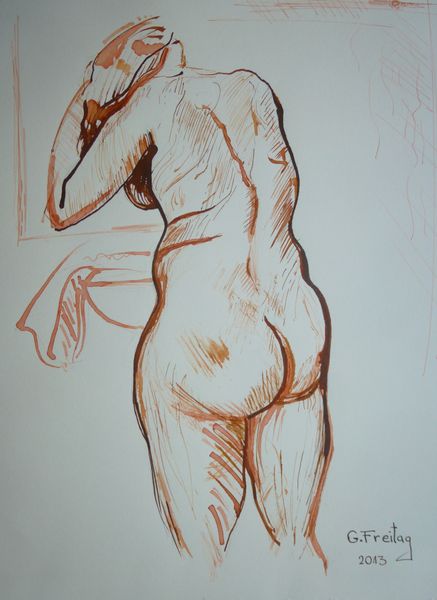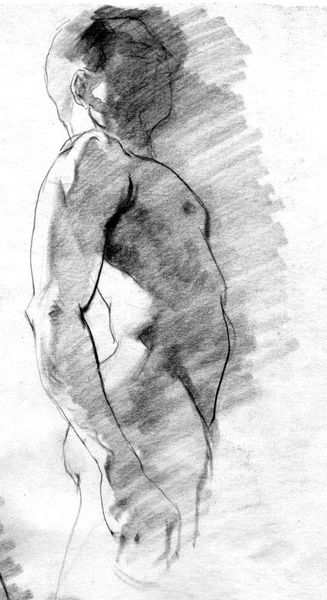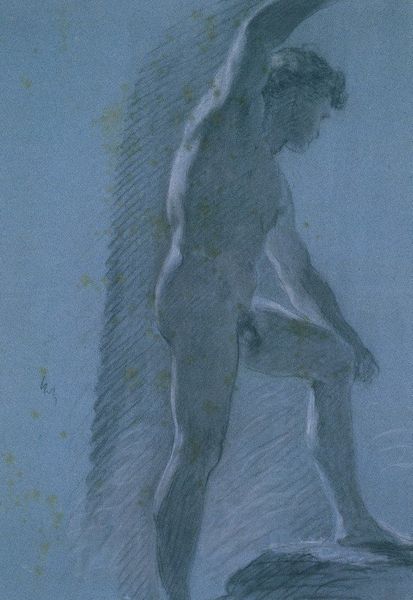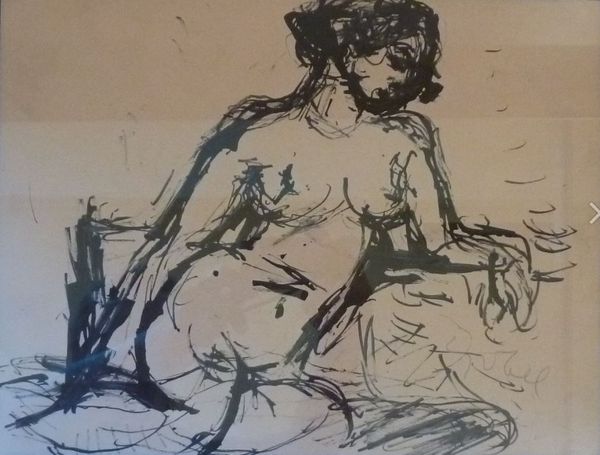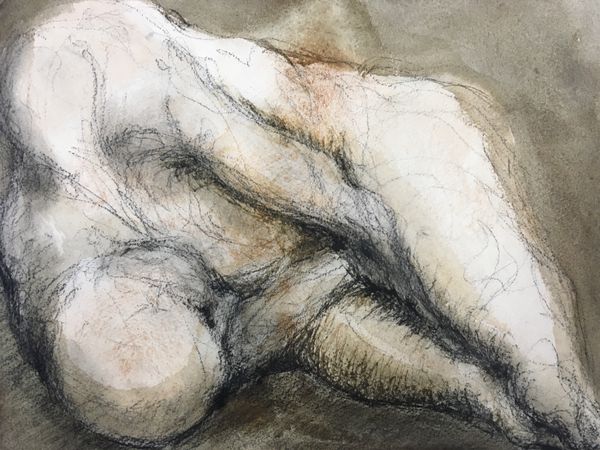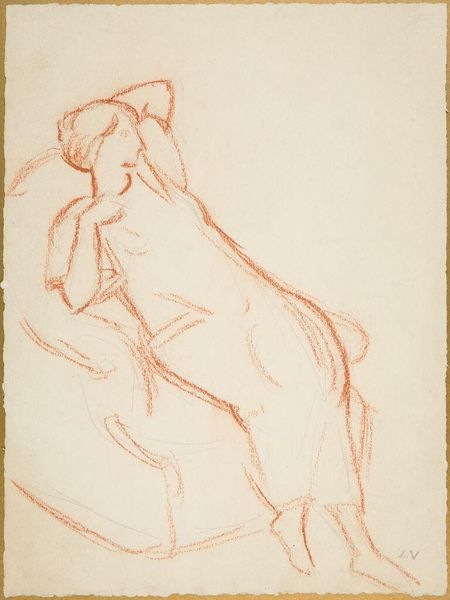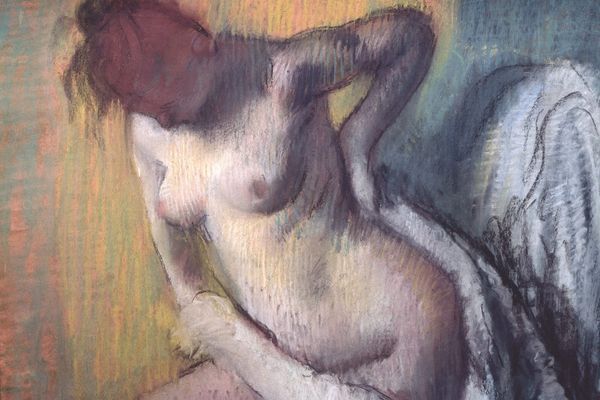
drawing, coloured-pencil, pastel
#
drawing
#
coloured-pencil
#
self-portrait
#
impressionism
#
figuration
#
oil painting
#
intimism
#
coloured pencil
#
pastel
#
nude
Dimensions: 50 x 33 cm
Copyright: Public domain
Curator: Edgar Degas created "The Bath" around 1883. It's rendered in pastel and colored pencil on paper, and remains in a private collection. What are your immediate impressions? Editor: Well, there’s a vulnerability that’s quite palpable, a sense of private moments captured in these broken strokes of colored pencils and pastel. It is definitely not something designed for the male gaze. Curator: Precisely. Degas often chose unconventional viewpoints, cropping figures and disrupting traditional compositions, and in doing so he challenged the very notions of the acceptable viewpoint and beauty. Note the dynamic asymmetry and high vantage point—we view the subject as if through a keyhole. What semiotic charge does that carry for the viewer, considering privacy and privilege? Editor: Indeed, this work exemplifies the rise of Intimism and its cultural focus during this time period on representations of private domestic life of bourgeois individuals, primarily women. And given the historical realities for many women during the 19th century—arranged marriages, constraints upon travel, lack of voting and educational rights—such a scene might not convey comfort. Rather, constraint. Curator: Absolutely. Degas also employed color as a structural element. Consider the way the blue of the tub is echoed and amplified by the ochre and white of the ground; they act as framing devices. Furthermore, we note that the planes of the ground tilt upwards, defying naturalistic space. It pushes the figure forward and compresses the pictorial field. Editor: Degas' later works like "The Bath" mark a profound evolution away from the conventional art sanctioned and privileged within the institutional salons and exhibitions in Paris, such as the Académie des Beaux-Arts. It really represents a movement towards increased experimentation in material use and imagery selection. Curator: His formal experimentation undoubtedly laid the foundation for successive movements. One can also draw lines through his subjects of modern, ordinary life directly into works such as the Ashcan School. Degas expanded painting's expressive potential. Editor: I agree. Seeing the composition through these lenses certainly helps to further articulate our appreciation and consideration of his place in modern art and art history.
Comments
No comments
Be the first to comment and join the conversation on the ultimate creative platform.
